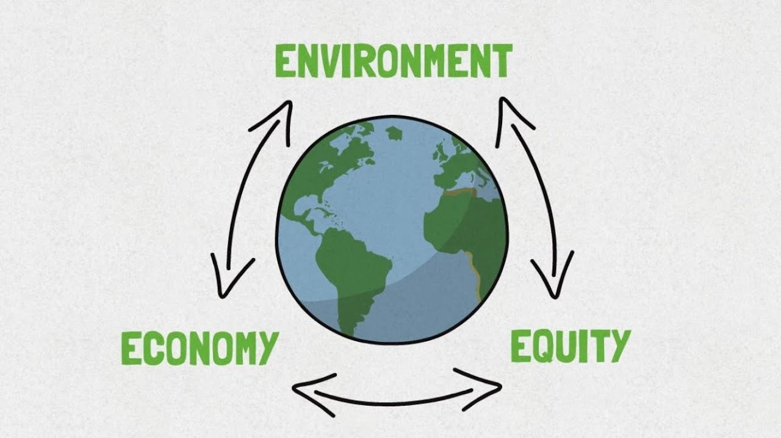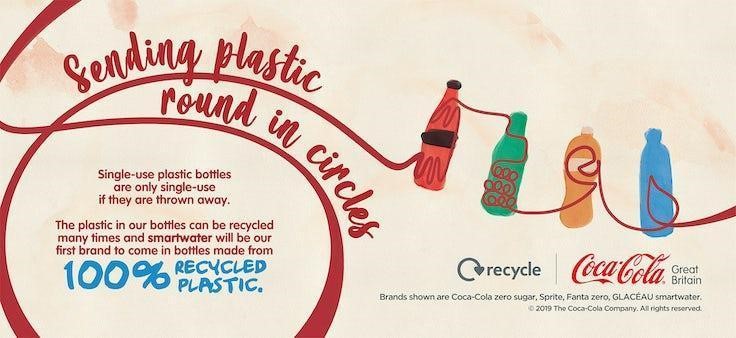Sustainability is the new way of living; it does protect the environment, adds to preserving natural heritage for future generations, and improves the quality of our lives. And it does come at the cost of extra effort; it is like homework we need a little nagging and pushing to pursue!
Sustainable behavior makes it to the list of woke agendas that advertising agencies have to make campaigns on actively. That is one of the tried and tested ways to get an audience to do their bit. While eco-jokes do their thing, most of the time, advertising plays an important role in influencing sustainable behavior.
And since we’ve mentioned an eco-joke, here goes; We’re tired of people telling us to turn off the lights to save the environment. We tried it once and nearly killed some bloke on a bike. (Read the blog to the end, even if the joke was too poor and has put you off!)
Several barriers concerning sustainable behavior must be considered; these can be broadly categorized into socio-cultural, psychological, structural, and financial barriers.
About 58% need help finding sustainable products, while 80% of people focus more on saving money rather than saving the planet. Hence, conscious shopping goes right out of the window, with about 69% making it all about convenience and 58% not acknowledging it as a ‘problem of the future.’
Now that we’ve discussed the barriers to sustainable behavior let’s look at how to influence sustainable behavior through advertising. Advertising is an activity that influences a large population, reinforces positive behavior, and contributes to brand building. And the aspect of advertising dealing with eco-friendly or sustainable advertising is called green advertising, wherein brands come across as environment-friendly.
Branding efforts to increase sustainability
Across all sectors, companies are trying to increase brand sustainability by promising a reduction of carbon footprints. This results in consumers checking if their favorite brands are working toward their sustainable behavior responsibility. This is when advertising and its influence come into the picture.
When a brand catches our attention with ads that promote sustainable behavior, it stands out from other brands. For instance, Tesla advertises its noteworthy features and thrives on being a sustainability pioneer in its campaigns.
This shifts focus toward using the right psychological levers when advertising sustainable behavior, or it creates a gap between value and action wherein the intended impact of the advertisement doesn’t make it through to the audience acting upon it. Humor is a frequently used tool to make an impact and induce action from the audience. Sometimes advertisements take it too far with dark humor, which makes ads more appealing and impactful.
Important psychological levers to consider
Here are a few psychological levers that must be put to use when creating advertisements to impact sustainable behavior:
1. Emotional Investment
Embracing the story and not the statistics creates an emotional investment from the audience’s end. Unilever launched Growing Roots, a snack brand donating 50% of its profits to urban farms, this was found through the help of statistical analysis. Their advertising could have been laden with statistics, but it is based on stories behind the movements improving our planet.
A Cone/Porter Novelli study found that 77% of consumers feel comparatively stronger emotional connections with companies and advertisements that are purpose-driven over traditional ones. Hence, emotionally investing the audience toward sustainable behavior and its impact on their children’s future is a powerful marketing research agency and advertising tactic.
2. Connectivity to nature
When it comes to sustainable behavior, it is important to have people connect to nature strongly and instinctively. It should target their emotional responsibility toward preserving nature by practicing sustainable behavior.
One example is Seventh Generation’s Trees and B’s Advertisement, wherein the script is based in a garden, and the main hero of the ad is personified as a tree. Even the recent H&M campaigns are based on promoting sustainable behavior. According to statistical analysis, during a campaign for its fall edition in 2019, one of H&M’s advertisement pieces was a short video showcasing the positive side of durable, reusable clothing made from recycled PET bottles.
3. Action Plan to implement
Handing an action plan to consumers is one of the powerful ways of using advertisements to make an effective impact through a marketing research agency. This helps brands cross the value and action gap. An excellent example of an action plan to implement psychological lever is the Coca-Cola advertising campaign encouraging people to recycle bottles by printing, “I can become another bottle when you recycle me. Thanks!”
4. Giving the audience a sense of being in charge
When advertisements motivate the audience to make them think they are in charge or are responsible for something, it results in action.
One of Google’s advertising campaigns, titled; Google Sustainability | Helping Everyone make more sustainable choices, renders examples for people to adopt sustainable behavior, such as choosing eco-certified hotels, taking eco-friendly routes via Google Maps, and using features to sort flights based on CO emissions. Such advertisements make the audience feel as if they are in control of their actions in a manner that directly impacts the environment.
5. Giving the audience a way of learning
Advertising can influence the audience’s emotional reactions, attitudes, and behaviors. Suppose a step-by-step guide shows the audience how to practice sustainable behavior. In that case, the audience will likely imitate the same, making it one of the impactful ways of social learning.
Apple has been advertising carbon neutrality and how they are contributing to sustainability and combating climate change. Another impactful campaign on the same lines is the Climate action starts at Home – IKEA campaign, which showcases steps one can practice in everyday life toward sustainability.
Conclusion
Sustainably speaking, advertising holds the power to influence and get the audience to act upon adopting a sustainable behavior. Ultimately, it comes down to the kind of psychological lever used, how it is used, and whether it complies with what the brand stands for. If all the pedestals are chosen in the right context, advertising is bound to produce results that are positive not only for the brand but for the environment as well. To ensure that the advertisements perform well, understand your target audience concerning the brand value and where the sustainability agenda can fit perfectly without coming across as forced.
Maction is a leading market research agency that provides the best technology-driven survey platform available. With our considerable experience, we can help you gain the suitable consumer insights necessary for designing your creative strategy.
Contact the expert consultants at Maction Consulting today.




